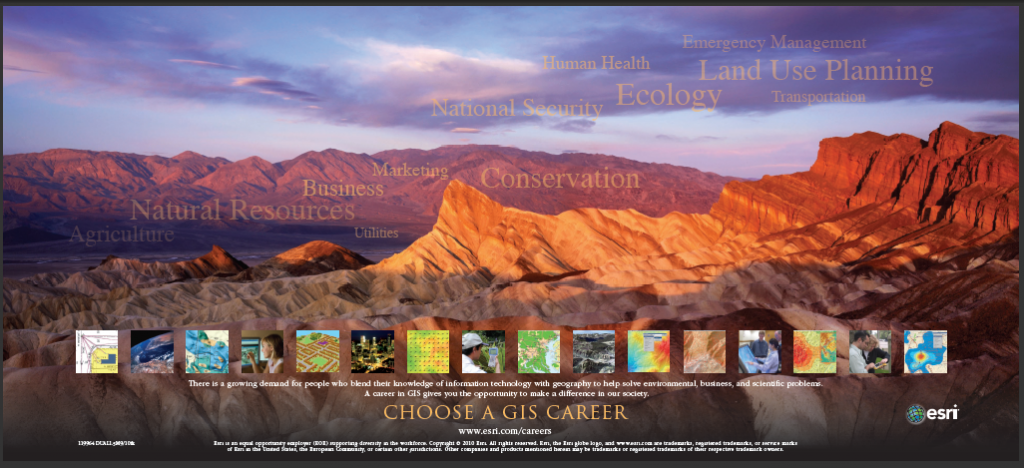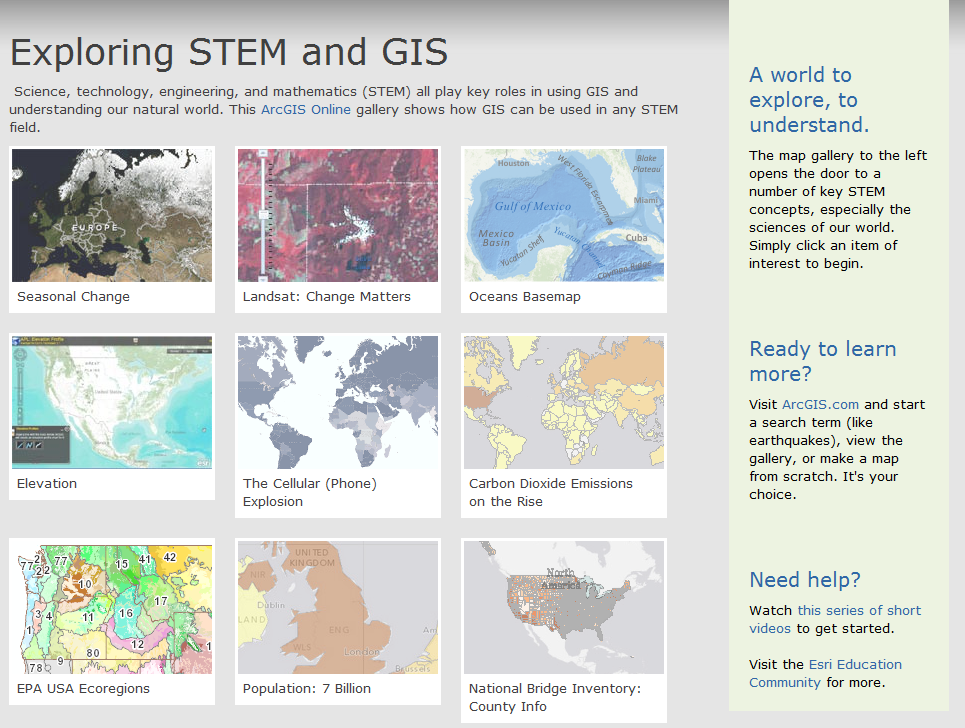Anyone who has participated in the annual Esri International User Conference or has pored over the annual Esri Map Book knows that geography and science touch our lives every day. It is incumbent upon we GIS professionals, and others we inspire, to clearly communicate the value and benefits of careers working with geospatial technologies. And this year’s Earth Science Week offers a great opportunity for the GIS community to come together and promote geospatial career pathways.
As we look at the current state of the world, imagine the future, and recognize that we and others must jump into the breach to tackle everything from local matters to global predicaments, we have always seen GIS and a geographic perspective as essential to helping steward local communities and the planet. This very much includes the geosciences community—from people seeking to solve energy sustainability issues to those helping ensure our planetary ecological footprint is softer to those contending with interrelated ocean and atmosphere changes. The Esri Education Program, a 20-year proponent of the use of geospatial technology in science education, has been attentive to this. Another great step forward is getting the geospatial industry to embrace and actively promote Earth Science Week and advance the geosciences career pathway.

Earth Science Week was launched by the American Geosciences Institute (AGI) in 1998 “to help the public gain a better understanding and appreciation for the earth sciences and to encourage stewardship of the Earth.” Over time, the annual event has set its chief focus on K-16 teachers and students, working to build interest in the geosciences—in classroom teaching, college majors, and ultimately the geosciences workforce.
Each year, Earth Science Week is framed by a compelling, organizing theme. For 2012, the theme is Discovering Careers in the Earth Sciences. The preface to the activity calendar proclaims the mission: “To enhance our understanding of interactions among the Earth systems—the atmosphere, hydrosphere, geosphere, and biosphere —we all need to know about the work done by professional geoscientists.”
While learning about what the geosciences workforce does every day is an overarching goal, a deeper foundational motivation is clear from a story in the December 2011 issue of Earth magazine, “Jobs, jobs everywhere, but not enough people to fill them.” In short, the article peers into 2021 and predicts that the need for geoscience jobs will grow far faster than the current stream of incoming geoscience graduates are entering the workforce. The combination of rapidly advancing Baby Boom generation retirements and constrained flow of new qualified entrants equates to a potential gap of 145,000 to 202,000 geoscience jobs left unfilled by 2021. It is clear that, both individually and collectively, we need to help close this gap by working with AGI and other organizations, including our local educational institutions, to foster student curiosity and engagement in these fields and careers.

insider